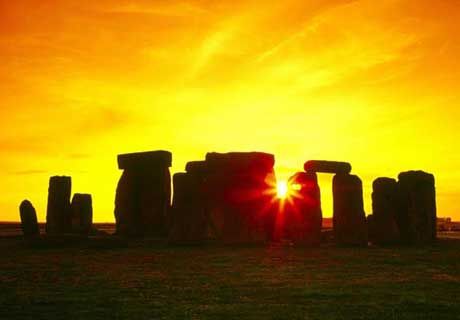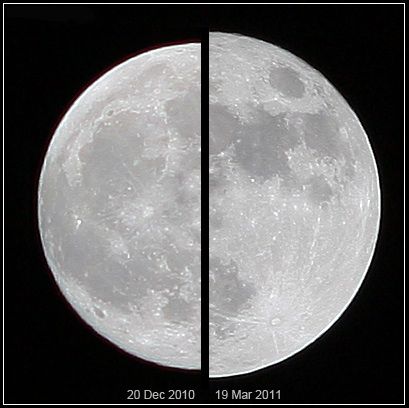Summer arrives late this afternoon on the East Coast at 5:44 PM when the Sun reached the Tropic of Cancer. People living there would have seen the sun pass directly overhead at Noon. The Solstice is the 24 hour period during the year when the most daylight hits the Northern Hemisphere. The Sun’ angle relative …
Tag: Summer Solstice
Jun 21 2015
Summer Solstice 2015
Once again we are halfway through the year. I was up at dawn as the last Spring thunderstorms passed through, I watched as the sky lightened through thick clouds to bid good bye. After making some coffee, I went into the yard to check the gardens for damage from the torrential rains that fell through the night. I wiped off the table and dried a chair. I watched the sky as the clouds thinned could already feel the air getting warmer. Summer is here.
Summer officially arrived at 12:38 PM as the Earth tilted towards the sun at its Northern maximum, the Tropic of Cancer then quickly began its journey back to the south.
It is a but a moment in time significant for so many cultures, religions and countries. Here in the US there are many cities that will light huge fires in public places to celebrate the longest day of the year, Midsummer. The fires will be lit in the fire pit in my yard. I’ll fix a dinner tonight with some of the newly harvested vegetable that are available at the local markets and seasoned with the herbs from my garden.

ONCE, HUMANS were intimate with the cycles of nature, and never more than on the summer solstice. Vestiges of such awareness survive in White Nights and Midnight Sun festivals in far northern climes, and in neo-pagan adaptations of Midsummer celebrations, but contemporary people take little notice of the sun reaching its far point on the horizon. Tomorrow is the longest day of the year, the official start of the summer season, the fullest of light – yet we are apt to miss this phenomenon of Earth’s axial tilt, as we miss so much of what the natural world does in our surrounds.
In recent months, catastrophic weather events have dominated headlines as rarely before – earthquakes and tsunami in Asia; volcanic cloud in Europe; massive ice melts at the poles; tornadoes, floods, and fires in America. “Records are not just broken,” an atmospheric scientist said last week, “they are smashed.” Without getting into questions of causality, and without anthropomorphizing nature, we can still take these events as nature’s cri de coeur – as the degraded environment’s grabbing of human lapels to say, “Pay attention!”
Jun 21 2013
Summer Solstice 2013
Cross posted from The Stars Hollow Gazette
We are halfway through the year and are ready to celebrate the first harvest amidst climate disruption, natural disasters compounded by man’s foolish idea that he could harness the devil. I spent some time this morning weeding my herb garden, snipping the flower buds from the huge pot of sweet basil so the energy goes to the flavorful leaves and a short walk on the beach. Tomorrow morning I will watch the sun rise for the last few hours of Spring and later watch it set on the first few hours of Summer which ushers in at 1:04 AM EDT as the Earth tilts towards the sun at its Northern maximum, the Tropic of Cancer.

Sunrise on the first day of Summer at Stonehenge in Salsbuty, England
It is a but a moment in time significant for so many cultures, religions and countries. Here in the US there are many cities that will light huge fires in public places to celebrate the longest day of the year, Midsummer. The fires will be lit in the stone fire pit in my yard. We’ll eat some of the newly harvested vegetable that are available at the local markets and eat food cooked with the herbs from my garden.
This year there is another treat for the first weekend of Summer, a Super Moon, on June 22 and 23. This is when the moon is closest to the earth (perigee), about 221,824 miles away, as compared to the 252,581 miles away that it is at its furthest distance from the Earth (apogee). The moon will appear 14% larger and 30% brighter than a typical full moon.

“The supermoon of March 19, 2011 (right) compared to a more average moon of December 20, 2010 (left), as viewed from the Earth”
Image Credit: Supermoon Comparison via Wikimedia Commons
The weather here in the northeast is going to be near perfect for watching the sunrise on the longest day of the year and moonrise the brightest and biggest full moon of the year. Check out the awesome photos from last year’s celebrations from around the world, courtesy of Huffington Post Canada.
I will be on the beach as the sun peaks over the horizon tomorrow and at a cook out with friends on Saturday celebrating the glory of Summer and the moon. Tell us what you will be doing.
Happy Summer
Jun 20 2012
Summer Solstice 2012
Cross posted from The Stars Hollow Gazette
We are halfway through the year and are ready to celebrate the first harvest amidst climate disruption, natural disasters compounded by man’s foolish idea that he could harness the devil. I spent some time this morning weeding my herb garden, snipping the flower buds from the huge pot of sweet basil so the energy goes to the flavorful leaves and a short walk on the beach. Tomorrow morning I will watch the sun rise for the last few hours of Spring and later watch it set on the first few hours of Summer which ushers in at 7:09 PM EDT as the Earth tilts towards the sun at its Northern maximum, the Tropic of Cancer. It is a but a moment in time significant for so many cultures, religions and countries. Here in the US there are many cities that will light huge fires in public places to celebrate the longest day of the year, Midsummer. The fires will be lit in the stone fire pit in my yard. We’ll eat some of the newly harvested vegetable that are available at the local markets and eat food cooked with the herbs from my garden.

ONCE, HUMANS were intimate with the cycles of nature, and never more than on the summer solstice. Vestiges of such awareness survive in White Nights and Midnight Sun festivals in far northern climes, and in neo-pagan adaptations of Midsummer celebrations, but contemporary people take little notice of the sun reaching its far point on the horizon. Tomorrow is the longest day of the year, the official start of the summer season, the fullest of light – yet we are apt to miss this phenomenon of Earth’s axial tilt, as we miss so much of what the natural world does in our surrounds.
In recent months, catastrophic weather events have dominated headlines as rarely before – earthquakes and tsunami in Asia; volcanic cloud in Europe; massive ice melts at the poles; tornadoes, floods, and fires in America. “Records are not just broken,” an atmospheric scientist said last week, “they are smashed.” Without getting into questions of causality, and without anthropomorphizing nature, we can still take these events as nature’s cri de coeur – as the degraded environment’s grabbing of human lapels to say, “Pay attention!”
Jun 21 2011
Summer Solstice 2011
Cross posted from The Stars Hollow Gazette
We are halfway through the year and are ready to celebrate the first harvest amidst climate disruption, natural disasters compounded by man’s foolish idea that he could harness the devil. I spent some time this morning weeding my herb garden, snipping the flower buds from the huge pot of sweet basil so the energy goes to the flavorful leaves and a short walk on the beach. This morning I will watch the sun rise for the last few hours of Spring and later watch it set on the first few hours of Summer which ushers in at 1:16 PM EDT as the Earth tilts towards the sun at its Northern maximum, the Tropic of Cancer. It is a but a moment in time significant for so many cultures, religions and countries. Here in the US there are many cities that will light huge fires in public places to celebrate the longest day of the year, Midsummer. The fires will be lit in the stone fire pit in my yard. We’ll eat some of the newly harvested vegetable that are available at the local markets and eat food cooked with the herbs from my garden.

ONCE, HUMANS were intimate with the cycles of nature, and never more than on the summer solstice. Vestiges of such awareness survive in White Nights and Midnight Sun festivals in far northern climes, and in neo-pagan adaptations of Midsummer celebrations, but contemporary people take little notice of the sun reaching its far point on the horizon. Tomorrow is the longest day of the year, the official start of the summer season, the fullest of light – yet we are apt to miss this phenomenon of Earth’s axial tilt, as we miss so much of what the natural world does in our surrounds.
In recent months, catastrophic weather events have dominated headlines as rarely before – earthquakes and tsunami in Asia; volcanic cloud in Europe; massive ice melts at the poles; tornadoes, floods, and fires in America. “Records are not just broken,” an atmospheric scientist said last week, “they are smashed.” Without getting into questions of causality, and without anthropomorphizing nature, we can still take these events as nature’s cri de coeur – as the degraded environment’s grabbing of human lapels to say, “Pay attention!”
